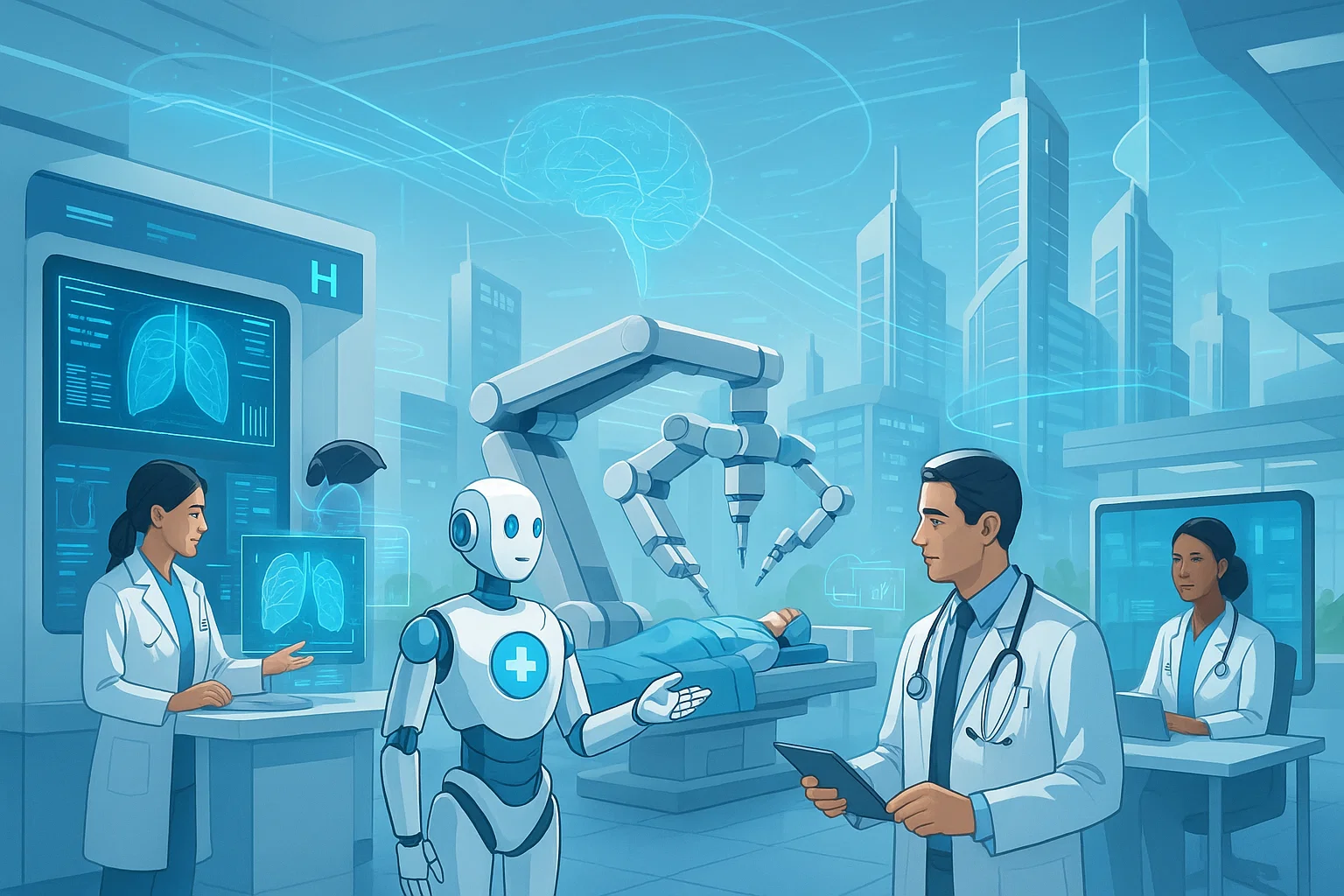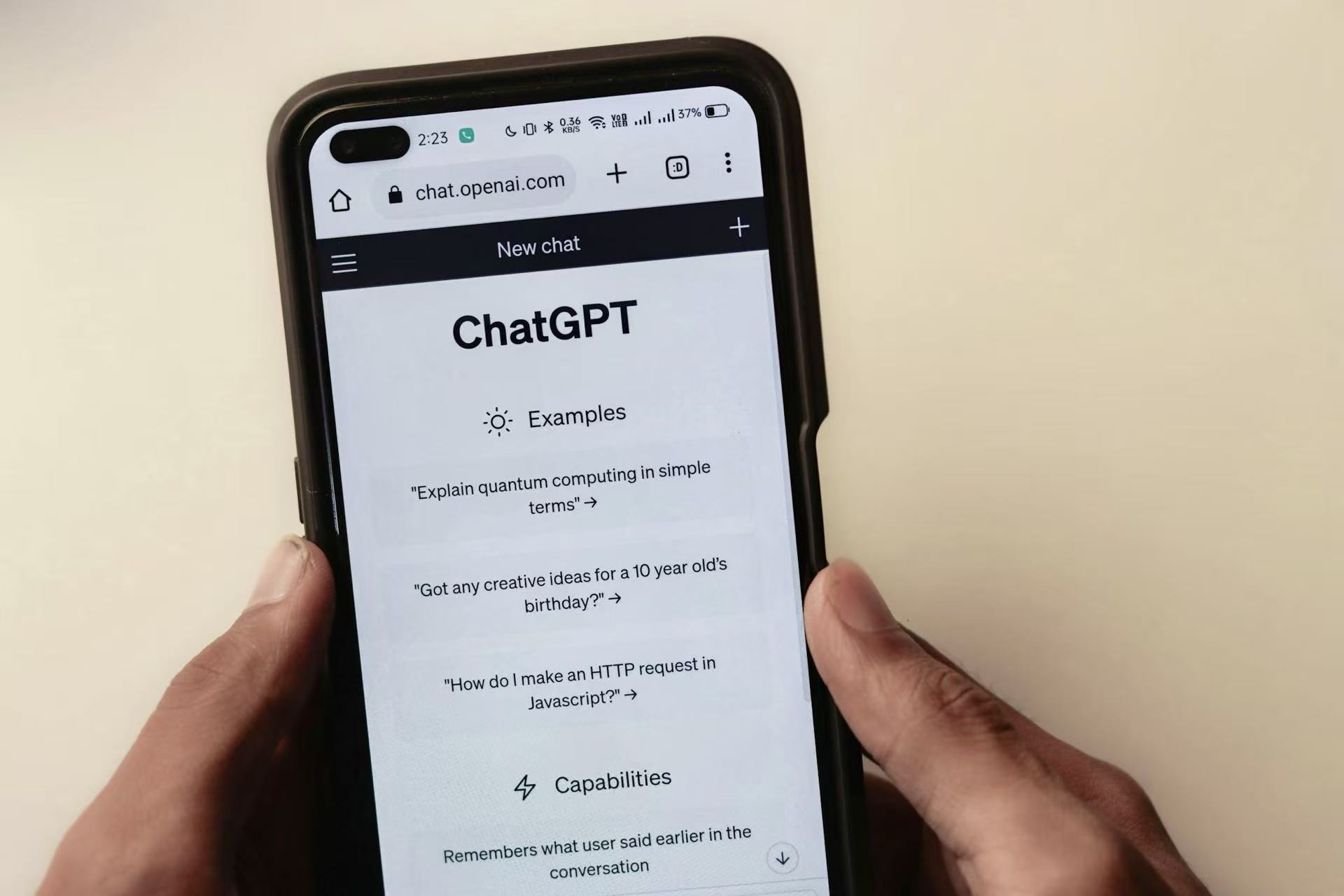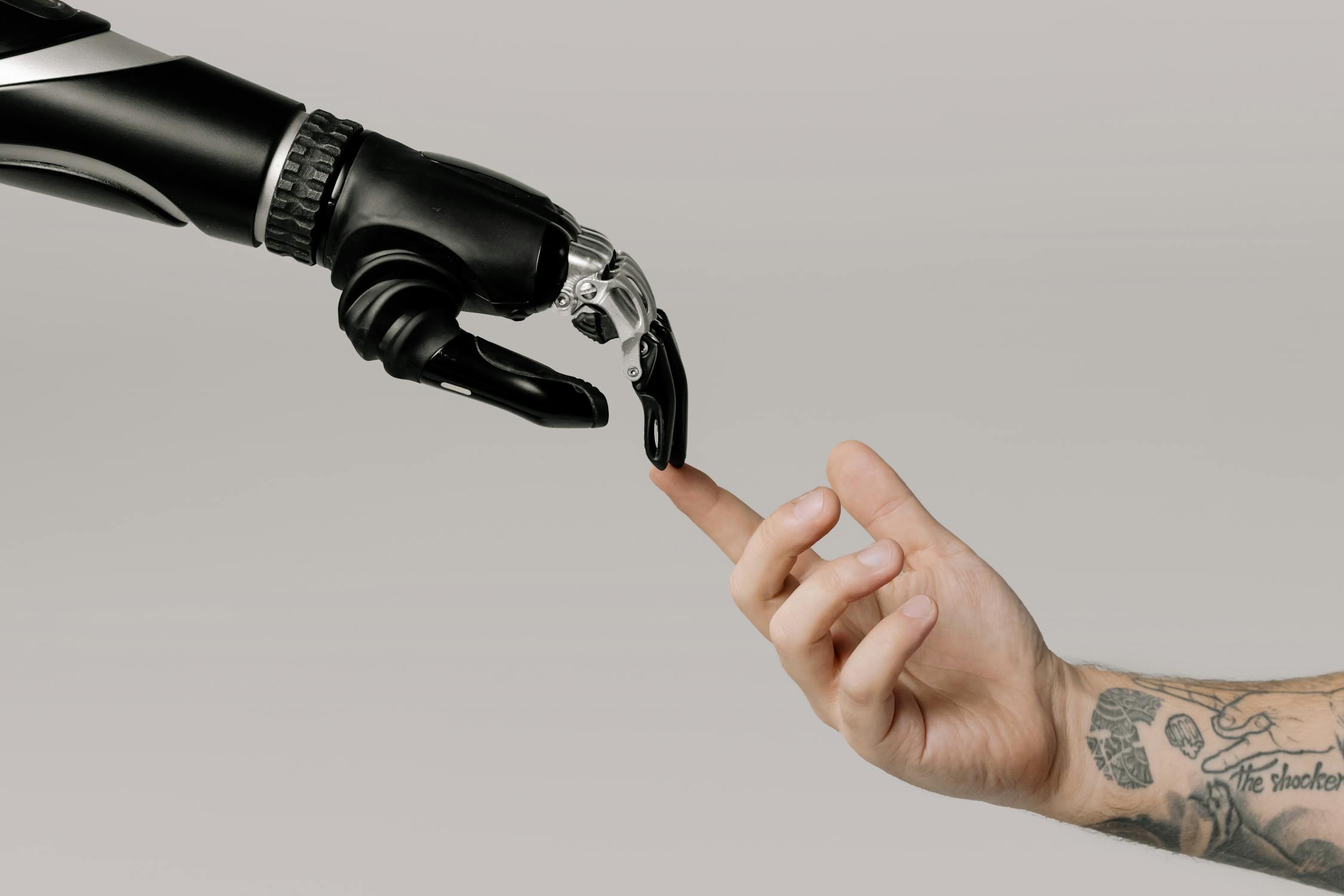- by Zlata Seregina Akkaoui
- Jun 04, 2025
How Artificial Intelligence is Revolutionizing the Future of Healthcare in 2025: Solving the Global Healthcare Workforce Crisis
- By Mohammed Akkaoui
- Sep Fri, 2025
- in AI

By 2025, AI will have revolutionized several key aspects of healthcare, directly addressing the workforce shortage. Let’s take a closer look at the specific ways in which AI is already playing a part in this transformation.
1. AI-Powered Diagnostics: Faster, Smarter, and More Accurate
AI is already showing incredible promise in diagnosing diseases, and by 2025, we can expect machines to assist doctors in diagnosing medical conditions faster and more accurately than ever before.
-
Predictive Analytics: AI algorithms will analyze a patient’s medical history and genetic data to predict health risks even before symptoms appear, allowing healthcare workers to focus on more complex cases.
-
Real-time Monitoring: AI systems will continuously track vital signs, offering instant alerts for any abnormalities that require immediate attention.
-
Image Recognition: With deep learning algorithms, AI will be able to interpret medical images—such as CT scans, X-rays, and MRIs—with greater precision than human doctors.
By automating diagnostic processes, AI can free up doctors and nurses to focus on critical cases, reducing burnout and addressing the workforce shortage.
In Germany, where healthcare innovation is a top priority, AI-powered diagnostic tools will lead to earlier detection of diseases such as cancer and neurological disorders. In the USA, AI will drastically reduce the wait times for diagnostic tests, improving both efficiency and patient outcomes.
2. Personalized Medicine: Tailoring Treatment to Individual Needs
AI’s ability to analyze a patient’s genetic data and provide personalized treatment plans will radically change the approach to medicine, particularly in underserved regions where medical resources are limited.
-
Gene Editing: AI will assist in genetic research and gene therapy, allowing doctors to correct genetic defects at the molecular level.
-
Custom Treatment Plans: Based on real-time data, AI will continuously refine and adapt treatment strategies to suit each patient’s unique health needs.
In China, where rapid technological advances are shaping the future of healthcare, AI-driven personalized medicine will ensure that even patients in rural areas receive the most effective and affordable care. Meanwhile, in India, AI will enable personalized healthcare solutions for people across diverse populations, addressing the unique genetic needs of millions.
3. Robotic Surgery: Precision and Reduced Recovery Time
Robotic surgery, powered by AI, is already changing the way surgeries are performed, and by 2025, it will significantly reduce the strain on healthcare professionals.
-
Minimally Invasive Surgery: Smaller incisions, less blood loss, and faster recovery times will make surgeries less taxing on both patients and healthcare workers.
-
Greater Accuracy: AI-powered robotic systems will execute surgeries with precision that reduces human error, improving patient outcomes and increasing surgical throughput.
-
Remote Surgery: Surgeons will be able to operate on patients in remote areas, providing high-quality care without the need for doctors to travel long distances.
In countries like Japan, where the population is rapidly aging, robotic surgery will help alleviate the burden on the limited number of trained surgeons, allowing them to conduct more procedures without compromising patient safety.
4. AI and Telemedicine: Bringing Healthcare to Your Doorstep
Telemedicine, combined with AI, is one of the most effective solutions to the workforce shortage. AI-powered systems can:
-
Real-time Diagnostics: AI will help analyze data from patients during remote consultations, assisting healthcare professionals in diagnosing and treating conditions without requiring an in-person visit.
-
Virtual Health Assistants: AI-driven virtual assistants will triage patient concerns, reducing the load on doctors and enabling them to focus on more complex cases.
-
Remote Monitoring: AI will be used to monitor chronic conditions remotely, ensuring that patients receive continuous care without taking up valuable time in crowded hospitals.
In countries like India, where there is a high demand for healthcare services but a lack of healthcare professionals in rural areas, AI-powered telemedicine will bridge the gap. In China, AI’s integration into telemedicine will allow patients in remote regions to access quality healthcare without having to travel long distances.
The Role of AI in Tackling Global Healthcare Challenges
While the healthcare workforce shortage remains a pressing issue worldwide, AI offers a promising solution that can help meet the increasing demand for healthcare services. By automating routine tasks, enhancing diagnostics, and improving patient care efficiency, AI is taking on some of the most burdensome aspects of healthcare work.
In the United States: Tackling Healthcare Inequality
In the USA, the healthcare system struggles with both workforce shortages and healthcare inequality. Rural areas, in particular, suffer from a lack of access to quality healthcare professionals. AI-powered telemedicine and diagnostic tools will help close this gap, ensuring that even the most underserved populations receive timely and accurate care.
In Germany: Building the Healthcare of the Future
Germany’s commitment to healthcare innovation means the country is already using AI to optimize healthcare delivery. By 2025, AI will play a significant role in increasing the efficiency of healthcare professionals, helping hospitals cope with the demand for healthcare services and improving patient outcomes.
In Japan: Revolutionizing Elderly Care
As Japan grapples with an aging population, AI is playing a critical role in easing the burden on healthcare workers. From AI-assisted elder care to robotic surgery, Japan’s advancements in AI technology will allow healthcare workers to do more with less, ultimately improving the quality of care for its elderly citizens.
In China: Innovating Healthcare with AI
China’s large population and limited healthcare infrastructure have made it especially vulnerable to the challenges posed by the workforce shortage. However, AI is transforming China’s healthcare system. With AI-powered healthcare solutions, China is working to meet the growing demand for healthcare workers and provide affordable, quality care to all citizens.
In India: Bridging the Healthcare Gap
India faces one of the largest healthcare workforce shortages in the world. However, AI is emerging as a crucial tool in addressing this gap. With AI-driven diagnostic tools and telemedicine platforms, India is improving healthcare access for millions of people, particularly in remote areas.
Conclusion: A Healthier Tomorrow Powered by AI
Artificial intelligence is not just changing healthcare—it is solving some of the industry’s most significant challenges. By 2025, AI will have addressed the global healthcare workforce crisis by automating routine tasks, enhancing patient care, and enabling remote consultations. Countries like the USA, Germany, Japan, China, and India are already leading the way, each leveraging AI to provide better, more accessible healthcare to their populations.
The future of healthcare is bright, and with AI at the forefront, we can expect more efficient, personalized, and accessible care for all. As the technology continues to evolve, so too will its potential to change lives—improving not only the healthcare workforce but also the lives of the patients they serve.


